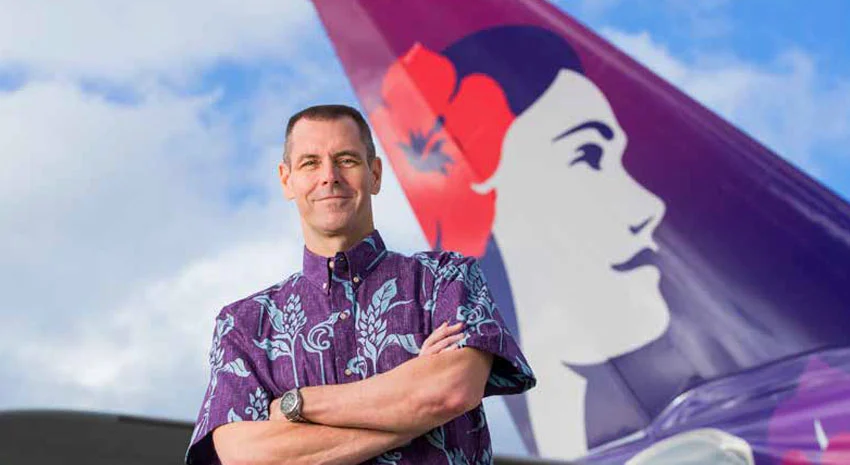I interviewed Peter Ingram, Hawaiian Airlines President and CEO. He spoke about the airline's B787 expansion and B717 replacement fleet plan, whether Boeing's delay has hurt or helped the airline and where it stands in the Alaska-Hawaiian Airlines merger process.
Do you see Hawaiian Airlines as a leisure airline that needs all those premium suites? There are 34 of them...
We absolutely believe that there's demand for the premium product that we have been spilling traffic with having an 18-seat premium cabin on our A330s. When we decided to put the lie-flat product on our A330s, it was a bit of a leap of faith for a leisure carrier. There was very little empirical data to go and look at to suggest could you get a premium that justifies all the real estate on the airplane.
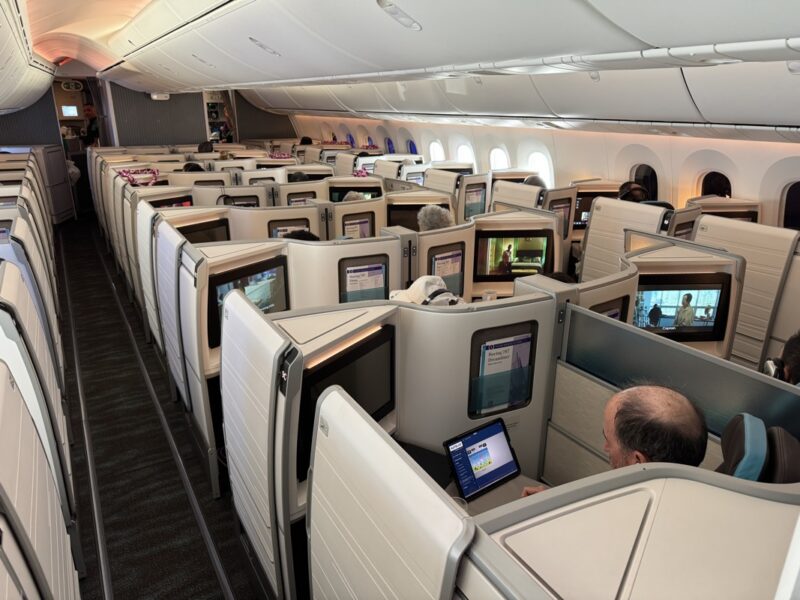
What we saw was that the revenue per square foot from that part of the airplane vastly exceeded what we got in our extra comfort seating area or in our main cabin area, and so we thought there was an opportunity to expand.
Peter Ingram, Hawaiian Airlines President and CEO
What the perfect number is, is again, a little bit of a judgment call, but once you go past a certain point, we were destined to get all the way to the second door of the aircraft and that's how we ended up with 34 on the 787. But we think there's going to be demand for it and we're looking forward to pleasing more of our guests by having more seats available.
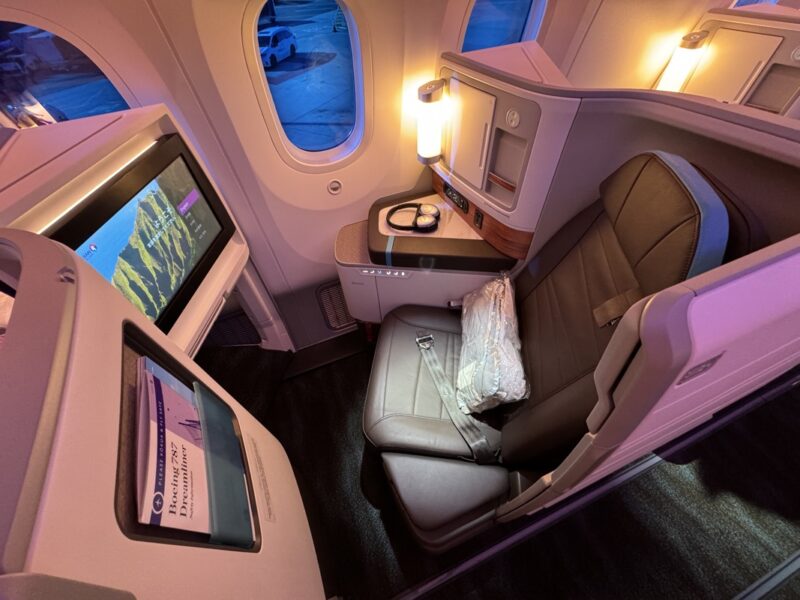
Are you using the 787 to replace the A330 or to Expand?
It's going to be a combination over time. Our A330s were delivered between 2010 and 2017 or 18. So it's still a relatively young fleet. There's a lot of life left.
We've got 12 787s on order. When you think about having 24 A330s in the fleet, we expect to grow that number of 787s over time, but we don't need to make all that capital expenditure all at once when the A330 still has so much life left. So we've always thought of this as a combination of growth and replacement. We will extend the flying with some of the A330s well into the next decade, but over time we will go through a gradual replacement and have opportunities to grow.
Will these 787 be shifted to the international market once the familiarization of operating (training) is concluded?
The way I think about that is what do you get with the 787? You get a bigger airplane in our configuration, about 300 seats compared to 278 on the A330, you get a bigger premium cabin and you get a much more fuel-efficient airplane, which really benefits you the longer you fly it.
So you want to fly to a place that has a ton of premium demand, enough demand to fill up a bigger airplane and really takes advantage of the long legs that the 787 has. So places like New York and Sydney…and may be Tokyo when that market recovers.
Peter Ingram, Hawaiian Airlines President and CEO
Initially, we're flying it to San Francisco for a month and then ultimately to Los Angeles and Phoenix, there's some practicalities in that and that's where in our network the Western US is where we do overnight maintenance and so we need to have some amount of that flying. Those are also high-premium demand markets, but we definitely want to get it on New York. We definitely want to get it on Sydney and those will be high priorities as we start taking more airplanes over the next couple of years.
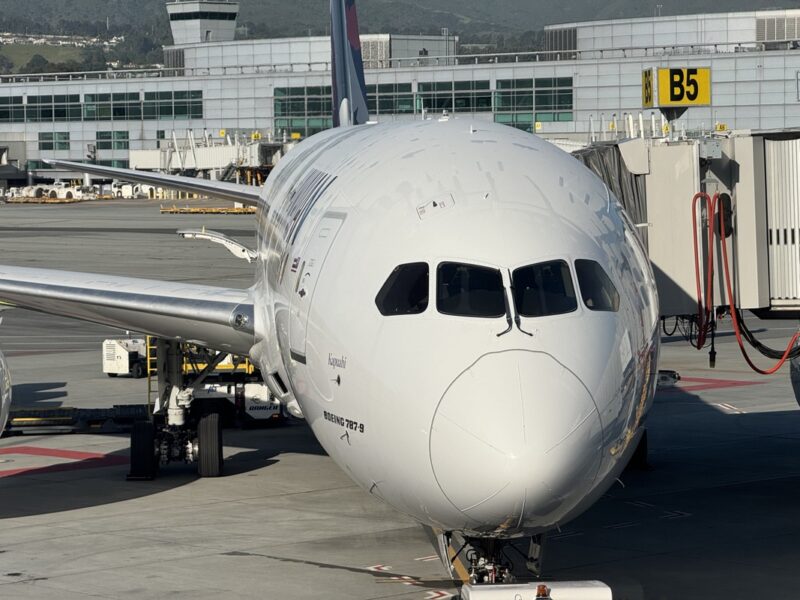
How much has the Boeing delay of 787 delivery impacted Hawaiian Airlines’ expansion plan?
Well, it's been an interesting ride. You may know we ordered the 787 initially in 2018. We expected to be taking deliveries I think in 2020 or 2021. Obviously, that coincided with the pandemic. So initially the delay was good news for us. It put off taking capacity that we didn't have a good place to fly at that moment in time.
As we've gone longer without having any new deliveries, there has been a level of frustration and eagerness to get on with the deliveries. But overall we've worked well with Boeing to come up with a delivery plan that we think makes sense for the long term. We actually in firming up the delivery timing, we took advantage of an opportunity to add two more firm aircraft to our order, which shows how much we still are excited about the 787s and remain committed to it for the long term. So we've had to manage that process. It's been a little bumpy along the way, but we are where we are and we couldn't be more excited to finally get to the point where the airplane's flying.
How many 787 Hawaiian Airlines will receive this year?
We've got two right now. We'll get a third one this year, another one in the early part of next year, and I think we'll have five total by the end of 2025. By 2027 we expect to have the 12 firm aircraft all delivered.
About the 717s, how long do you think they will remain in the fleet? What kind of replacement you're looking at?
That's an analysis we've been working on for a while. The 717s we originally took in 2001, we had 11 airplanes since 2001. We've added a few more over time, but they were all built between 2001 and 2006. So it is the timeframe when you want to start thinking about replacement even particularly given the fact that we put a lot of cycles on our airplanes flying very short haul flights.
We look at the landscape today and as a standalone Hawaiian Airlines, we saw three main options. Two were newly built airplanes, the A220 or the Embraer 195, which are in the same size category as the 717, which we think is about right, and we wouldn't change that. The other thing we looked at was whether could we consider getting some commonality in our fleet with the A320 family aircraft and maybe get some midlife, A320 or A319 CEOs would have some commonality with our A321 Neos and provide a little bit of a longer lifespan than the 717.
We've sort of paused that right now as we're going through our transaction with Alaska Airlines and one of the things that will reshape that analysis for the combined airline is Alaska is a big operator of the 737.
Peter Ingram, Hawaiian Airlines President and CEO
That was an aircraft that didn't offer any commonality benefits for us as a standalone. So we didn't really think of that, and didn't consider it seriously in our analysis, but it would open up some different opportunities for the combined airline. So right now that analysis is paused, the 717 still has enough life left that you don't have to rush into a decision and I think once the combined airline has all the regulatory approvals completed, then that'll be something that will be re-opened and complete that analysis and make a decision and start implementing it over the next several years.
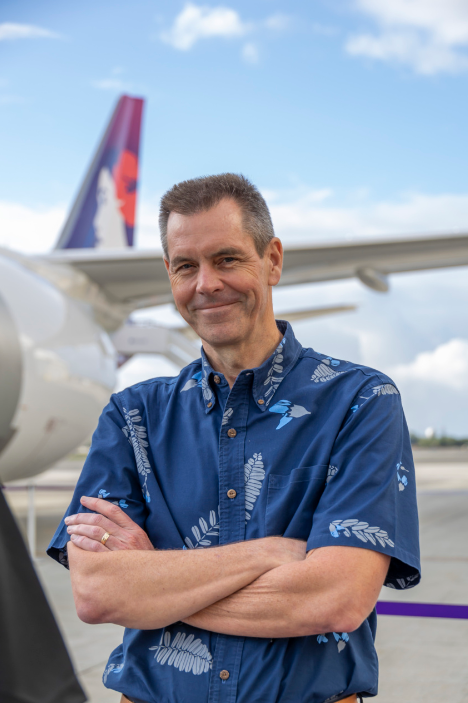
Would the Hawaiian brand be preserved or disappear if the merger were approved?
Yeah, the vision for the combined airline is that it will operate with two brands, maintain the Hawaiian brand that's been in the marketplace for over 94 years, maintain the Alaska Airlines brand, but bring the airline together under a single operating certificate and a combined technology platform.
Peter Ingram, Hawaiian Airlines President and CEO
And that is not something that we have seen in the United States. So it's a bit of a novel approach, but it really reflects the fact that the Alaska team, when they looked at the opportunity to combine with Hawaiian, really knew that the Hawaiian Airlines brand that myself and my colleagues have been working on over the last 94 years, including all the people who were here at the airline before us, has a tremendous amount of value and that is why we're keen to see that live on and to work through how you execute on this vision to have a single operating certificate, a single technology platform, but operating a dual brand strategy on top of it.
What's the next important milestone or timeline on the merger process?
There are a couple of key approvals that are required before the merger can be completed. One of them is getting the approval from the Hawaiian airline shareholders and we receive that approval in mid-February, so that is checked off our to-do list.
The next major approval and really the biggest hurdle to overcome now before we close the transaction is for the regulatory review by the competition authorities to be complete. In the case of our industry, it's the Department of Justice federally that completes that review. We are in the process of responding to their information, something that they call the second request that they issued to us in early February.
We expect to get all of our information delivered to the DOJ to answer that request over the next several weeks and then they will take some time over a few months after we've substantially complied with that request. Alaska has to complete its investigation. That timeline is not purely defined. There's a 90-day time period that we've agreed to for them to complete that review, but we will cooperate with them. Alaska will cooperate with the regulators and we expect to have discussions over the next several months to help get them through that major milestone.


